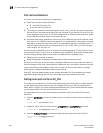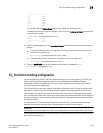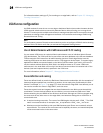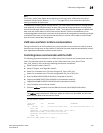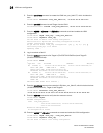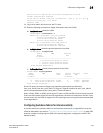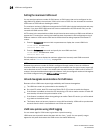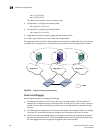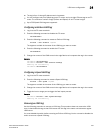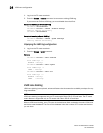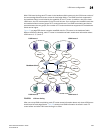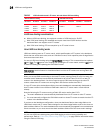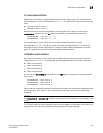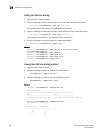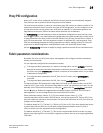
596 Fabric OS Administrator’s Guide
53-1002745-02
LSAN zone configuration
24
lsan_f2_f1 (H1, D1)
lsan_f2_f3 (H1, D2)
The LSAN in the host fabric does not need the tag.
3. In Edge fabric 1, configure the following LSAN:
lsan_super_f1_f2 (H1, D1)
4. In Edge fabric 3, configure the following LSAN:
lsan_super_f3_f2 (H1, D2)
5. Toggle either the host or target to trigger the fast import process.
The “super” tag is needed only in the LSANs of the target fabrics.
The target proxies D1 and D2 are always present in the host fabric (Edge fabric 2), even if the host
is brought down. A target proxy is removed from the host fabric when the target device is offline.
FIGURE 80 Example of setting up Speed LSAN tag
Rules for LSAN tagging
Note the following rules for configuring LSAN tags:
• You configure the tags on the FC router, and not on the edge switches. If Virtual Fabrics is
enabled, you configure the tags on the base switch on which the EX_Ports and VEX_Ports are
located. You then must ensure that the LSAN zones in the edge fabrics incorporate the tags
correctly.
• The LSAN tags are configured per FC router, not per fabric. If the backbone fabric has multiple
FC routers, it is recommended that you configure the LSAN tags on all of the FC routers.
• The FC router must be disabled before you configure the Enforce tag. Configuring the Speed
tag does not require that the FC router be disabled; however, after configuring the Speed tag,
you must toggle the host or target port to trigger the fast import process.
FC router 1
Edge fabric 3Edge fabric 1 Edge fabric 2
FC router 2
H1
D1 D2
= LSAN



